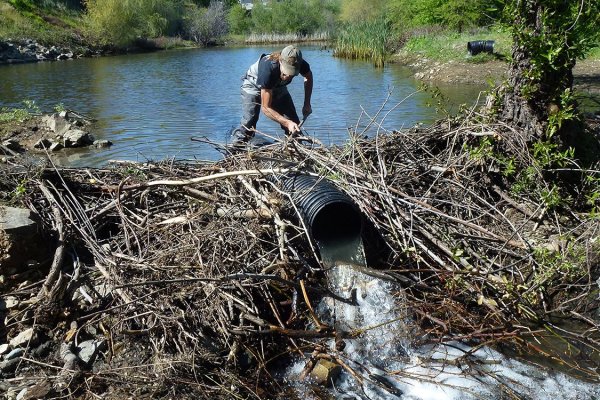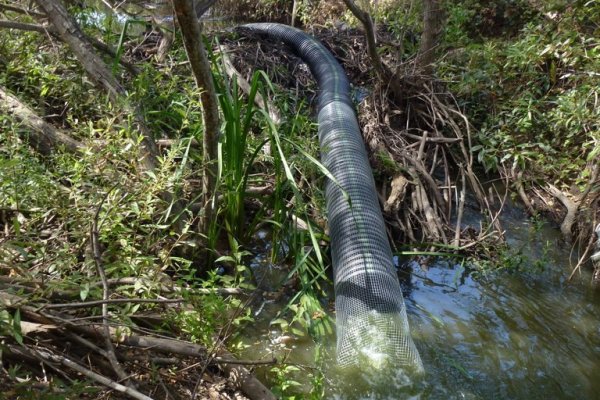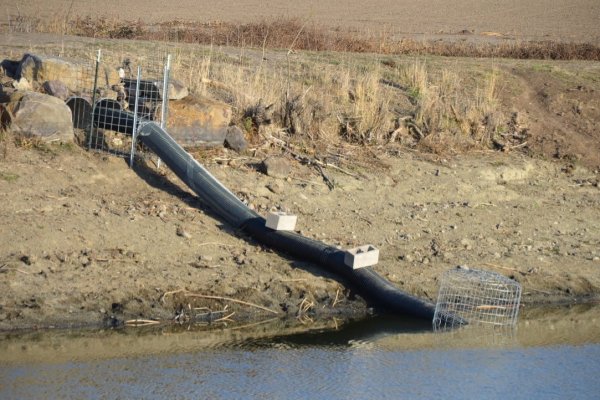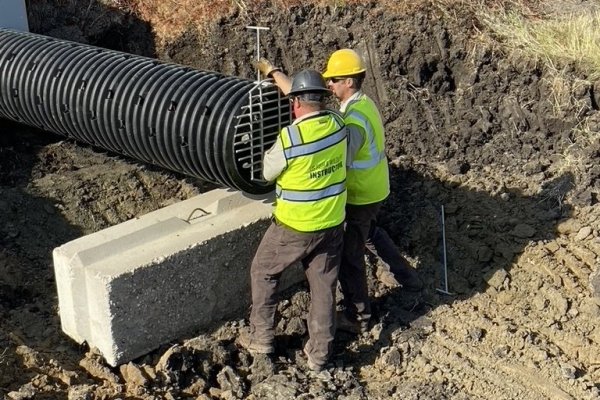Coexistence Works
While some landowners appreciate the presence of beaver for a multitude of reasons, others are frustrated by what beaver do to infrastructure, vegetation, and the landscape itself. The good news? The California Beaver Help Desk has many cost-effective strategies that transform human–beaver conflict into effective coexistence.
Learn more about coexistence strategies below, and then join our assistance program to get started!
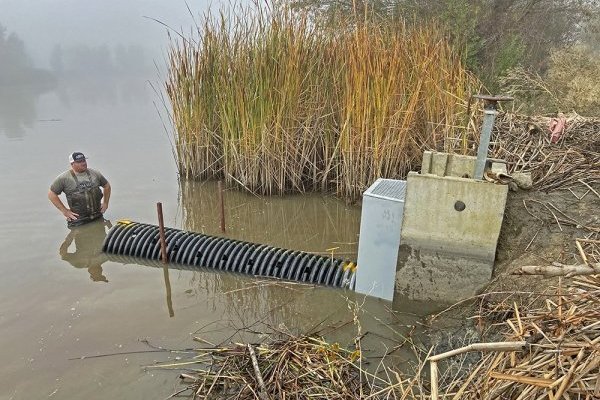
Managing Common Beaver Conflicts in California
The most common complaints regard “problem beaver” who build dams; cause floods; disrupt in-stream flow; and block culverts, irrigation ditches, and water conveyance structures. Beaver also burrow into levees and dam walls and cut down trees and other valuable vegetation. Land managers can address most of these activities with low-cost, easy-to-install techniques that prevent property damage and avoid the need to kill beaver, while retaining the many benefits they provide.
Easy Solutions to Common Beaver Problems:
Dam Flooding
As beaver build dams, rising water can cause flooding. Attempting to notch and/or remove dams is an ineffective response, as beaver will typically try to rebuild. Additionally, these activities encourage the beaver to harvest more vegetation, causing even greater impacts. To manage water height, property owners can install a Flexible Pond Leveler. This device prevents a beaver’s dam-building behavioral cue—the sound and feel of running water. Because beaver have an instinct to build when they hear running water, it is ineffective to simply remove or modify their dam. Instead, putting a Pond Leveler pipe through the dam prevents water from noisily spilling over the top, discouraging the beaver from building the dam any higher. A welded wire cage around the submerged upstream inlet keeps beaver from blocking the pipe. The pipe releases water below the dam crest on the downstream side, reducing dam-building cues. The height of the Pond Leveler can be strategically adjusted, lowering the pond to a level that reduces flooding, ideally retaining the beaver and associated benefits.
For more information, visit The Beaver Institute’s page on flooding.
Blocked Culverts and Drains
Beaver need deep water to avoid predators. When culverts and other drainage structures are installed in their habitat, beaver will try to block the flow of water through these structures to create a deep pond. However, keeping culverts open prevents roadbeds from being oversaturated and saves roads from flood damage.
There are several strategies to prevent blocked culverts, drains, and irrigation channels. If three feet of water depth is tolerable, this will help keep the beaver and their benefits in place. Individual site conditions and landowner tolerance determine which of the following three approaches is most appropriate.
- Culvert Protective Fences: These fences are designed in shapes and sizes specific to the channel topography, water depth, and flow of the stream site. These do not alter the stream height and are good for sites where ponded water cannot be tolerated. The fencing prevents blockage of the culvert encouraging the beaver to dam elsewhere. Requiring an hour of maintenance annually, properly designed and installed Protective Fences have a 95% success rate.
- Fence and Pipe Flow Device: This device prevents culvert and drain blockage using a Protective Fence and a Pond Leveler pipe to set the water at a safe level. A minimum water depth of three feet is required for this Pond Leveler intake to function properly. Consider using a Protective Fence alone if this depth cannot be tolerated. Requiring an hour of maintenance annually, properly designed and installed Pipe and Flow devices have a 99% success rate.
- Starter Dams: A starter dam can be built with fencing or natural materials such as rocks, wooden posts, and branches. Starting a dam 10 to 15 feet upstream of the culvert encourages the beaver to build on the starter dam instead of the culvert. If ponding upstream of the device is tolerable, this approach requires very little maintenance and is wildlife and fish friendly.
For more information, visit The Beaver Institute’s page on blocked culverts and drains.
Blocked Water Conveyance Structures
The Beaver Back Saver eliminates the need to frequently clear Twin Track™ Weirs of debris from beaver activity. The retrofit slides onto an existing weir, drawing water through a perforated pipe capped with a metal grate. This allows the weir to convey water without beaver hearing or sensing the flow, thus deterring them from plugging it up.
To learn more, read this informational how-to about the Beaver Back Saver.
Tree Damage
Beaver will cut down almost any type of tree, no matter the species or size. Trees and other woody vegetation can be protected either individually or in groups. Chicken wire is not strong enough to withstand beaver chewing, so in most places, it is best to wrap trees with four-foot-high, two-inch by four-inch mesh made of galvanized, welded wire.
Ensure the wire completely surrounds the tree, leaving a six-inch space between the outer edge of the trunk and the fencing to allow for growth. In areas where it snows, use taller fencing that will reach two feet above the average snow height for year-round protection. Alternatively, some people use one or two strands of solar-powered, portable electric fencing set three to four inches above the ground to prevent beaver from accessing vegetation.
Another option for tree protection is to paint the tree trunks with a mixture of exterior latex paint and coarse sand. Paint does require more maintenance and reapplication, but can be color matched to the tree bark to blend in well and address aesthetic concerns. To every gallon of paint, add 20 ounces of mason sand (30–70 mesh). Mix well and make only what you can use. Remove debris from the tree bark before applying the paint, and be careful not to apply too thickly or the sandy paint will roll off. Cover the entire section of the trunk that runs from the ground level to three feet above the anticipated snow level.
For more information about how to protect trees from beaver, visit the Beaver Institute’s page on tree damage.
Ready for technical and financial assistance options?
We’re here to help!
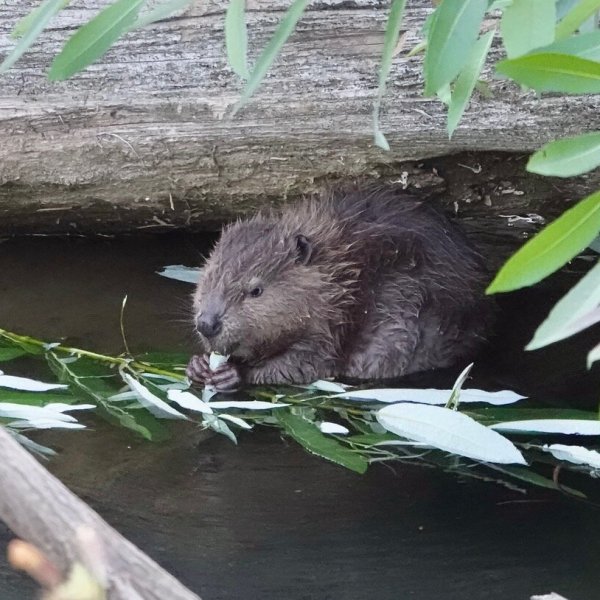
The California Beaver Help Desk is a partnership between the WATER Institute at Occidental Arts & Ecology Center, the Beaver Institute, and the California Department of Fish and Wildlife, whose Nature Based Solutions: Wetlands and Mountain Meadows Grant Program makes this work possible.

